The hard part over: youve successfully battled a nice blue marlin
, the mate taken his wraps on the leader and youll be flying at least one more flag this afternoon. Now what? Should you try to get your hook(s) back, and if so, what the best way to do it without a) getting someone hurt, b) taking a nice chunk out of the boat or c) killing the fish in the process?The first thing to consider is the nature of the fish itself. Whether it a near-grander blue marlin or a sailfish not much bigger than your left leg, if the fish is going bananas on the leader then the chances are good that youll do a lot more damage to your crew and your rig if you try to get the hook back. Most of the time on a hot fish Id rather leave the hook in and cut the leader as close as you can, says Tijereta Captain Bubba Carter, a veteran of the worldwide billfish grounds. Youre trying to do your best to let ˜em go in good shape so it doesnt make much sense to kill a fish on the leader to get a hook back.
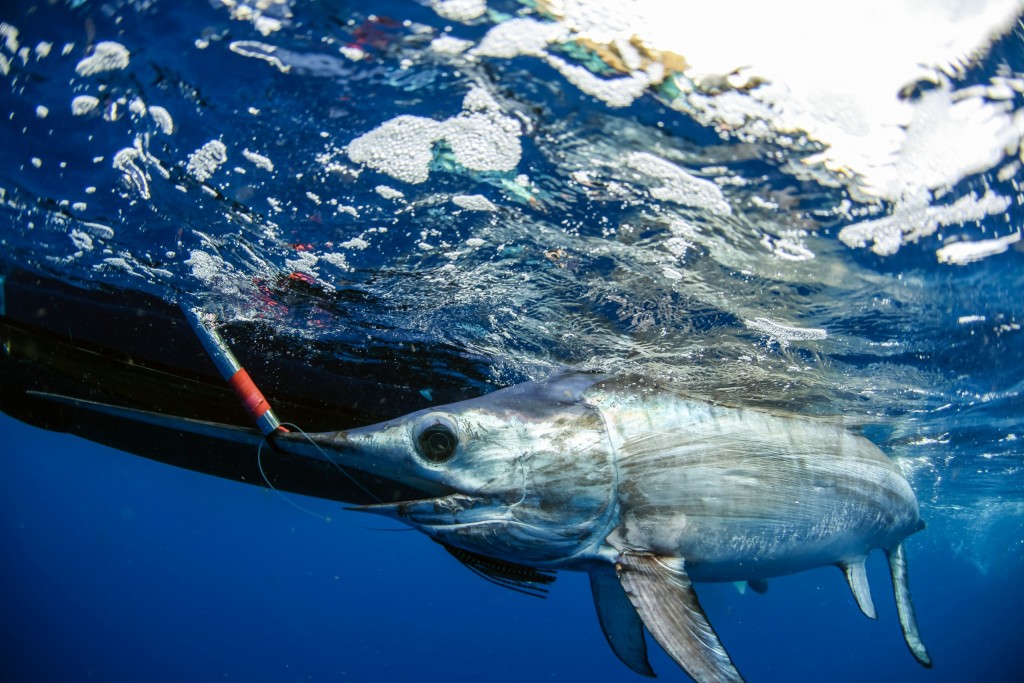
And dont forget that size can work against a crew, too. Small, acrobatic marlin like whites and stripeys can cause a lot of damage in the blink of an eye because theyre so much quicker and unpredictable than the larger blues. Get too complacent on the wire, or just plain unlucky, and whammo, there a pointy-ended fish flying through the cockpit. In most cases it better to cut the leader and let them be on their way as quickly as possible.
Capt. Billy Black”Dehooker
But let say were blue marlin fishing; the next step to consider is the style of hook when it comes to releasing ˜em correctly. If youre pitch-baiting with a circle hook then it going to be a lot better to just cut the leader but if the fish ate a lure then it might be worthwhile to try and get the hook(s) back. There are a couple tools that can help in this process, assuming that the fish has calmed down on the leader. The first is the Capt. Billy Black Pro Series Dehooker, a 30-inch long piece of hand-fabricated surgical stainless steel with a t-handle at one end and a u-shaped attachment at the other.
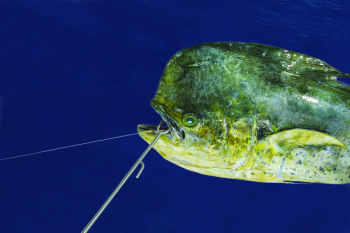
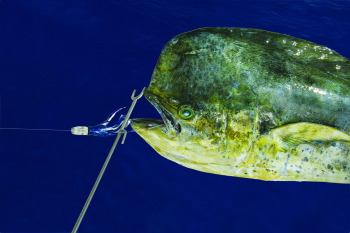
On the left the Dehooker is slid down the leader before a simple twist will remove the hook. On the right the Dehooker uses its hook to slide a lure up the leader for retrieval.
It also sports a small hook that designed specifically to retrieve the lure”while the fish is on the leader, use the hook to slide the lure up until it in hand then use the u-shape at the tip to push the hook back out. A professional fisherman for over 30 years, Capt. Black designed the tool back in the 1980s for use on the 50-foot Hatteras charterboat Duchess, a fixture in Walker Cay for many years, as a way to both retrieve his expensive trolling lures and to safely and easily release marlin. He made a few for friends but recently started to market the product to the sportfishing market. Each one is handmade by John Tannis and his staff at Tannis Towers in Palm City, proudly made in America by Americans, as Billy says.
ARC Dehooker
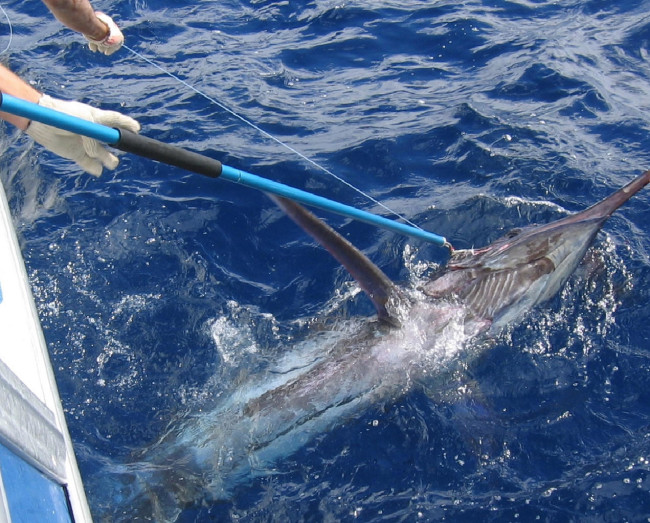
Another release tool is the ARC dehooker. Aquatic Research Conservation, Inc. (ARC) is a technology, research and manufacturing company that works to help both recreational and commercial anglers increase the post-release survival of gamefish species. They manufacture venting tools for bottom fish as well as dehookers in a wide range of sizes and styles, from small inshore versions to pole-mounted offshore-ready ones. The tip of the ARC features a small curlicue in the stainless steel, allowing the tool to slide down the leader to the hook, where it can be either pushed or pulled free depending on which angle is best.
Snooter
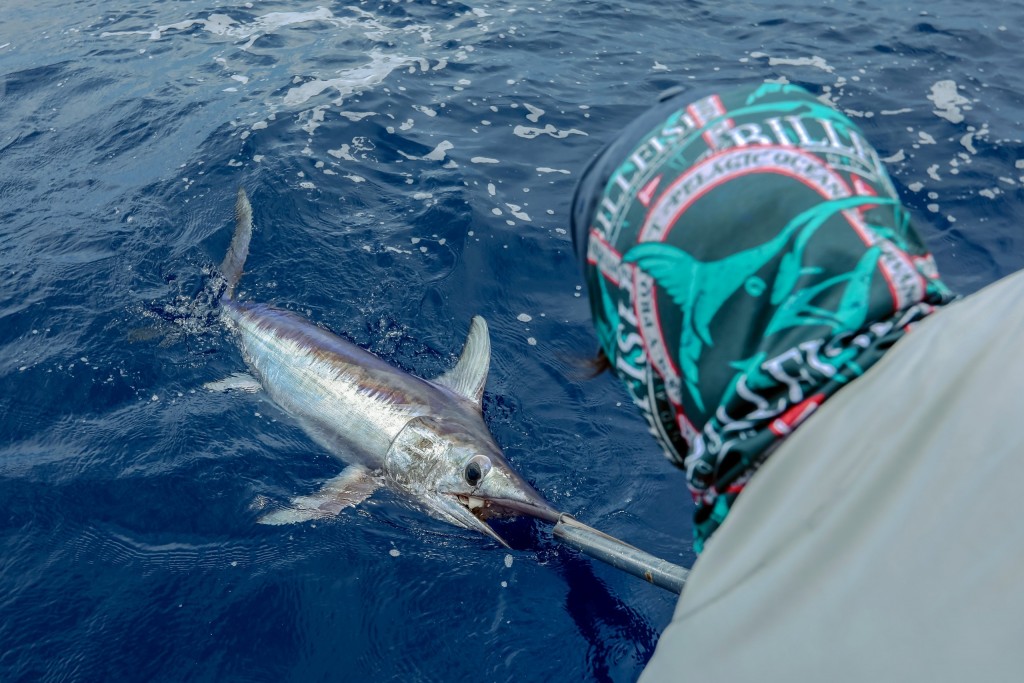
But what if you have a really nice blue marlin that comes up weak, brown and near death from the fight? Time to break out the snooter. As far as most anyone can recall, the first ones were used by Roddy Hays of Legend Lures fame in Madiera in the early 1990s”his intrepid mates had come up with a way to safely revive and control their big blues that involved a five-foot piece of one-inch PVC tubing, a short length of stainless steel cable and some half-inch rope. Just slip the noose end over the bill and cinch tight and the fish could be towed until it regained color for a successful release. However, the same rules about wildly thrashing fish also apply.
The snooter is NOT meant to tame a marlin on the leader, Hays says. If it jumping around then just let it go. But if you have one that needs some resuscitation then it works great, just lasso them around the bill and you can tow them for as long as you need until theyre ready to go. Because you now have control of the bill, the mate can also release tension on the leader, making it quite easy to get the hooks out of the marlin prior to release.
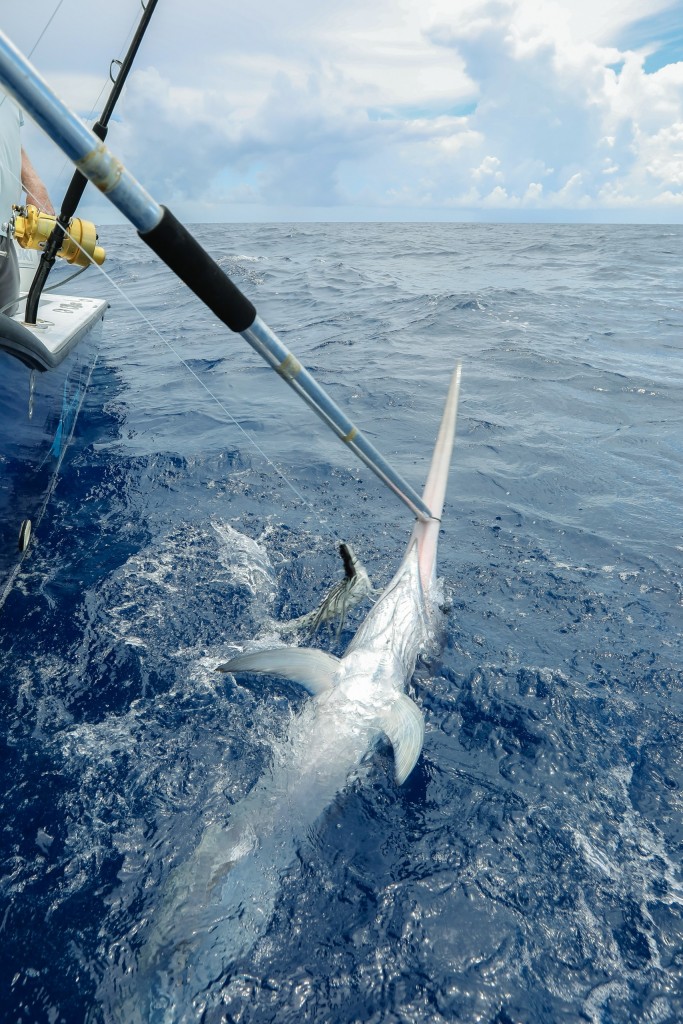
Capt. David Brackmann is another snooter convert, who has fished the fertile waters of Cabo San Lucas and the Pacific on the Caliente. He reports great success with larger blues and blacks but not so much with stripeys and not at all on sailfish due to their smaller bill diameter. We use it all the time on bigger fish that you want to get the hooks out of but still have a way of securing them so they can be revived before release, he says. We take the engine on that side of the boat out of gear and bump the other in forward once we have the marlin under control”it a system that works great in rough seas too.
Release ˜Em Right with a Release Ruler
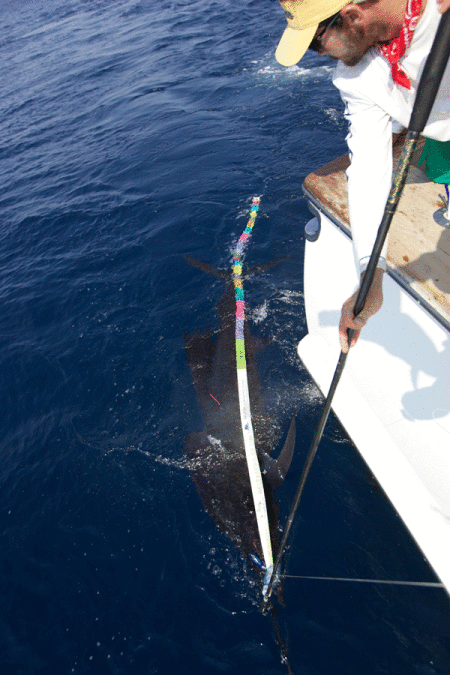
Correctly estimating the weight of a gamefish that intended for release has always been a guessing game for anglers, captains and crews”it usually takes years, if not decades of experience to even come close.
Until now. Release Ruler has revolutionized the way we estimate the weight of released gamefish. The concept is based on scientific information and years of past catches, where both the length and weight of the fish is known. By averaging this information, a very accurate correlation of a species weight in relation to its length can be determined. And while there are short fat fish and long lean fish, it a proven method to offer a very close estimate based on the law of averages.
The Release Ruler itself is made of a durable fabric material that floats, making it easy to stream alongside a fish prior to its release. The brightly colored bars represent a range of weights”simply hold the Ruler to the tip of the fish jaw and measure to the tail for a surprisingly accurate determination of its weight. The Release Ruler also shows up very well in both still photography and video and are perfect for documenting the estimated weight of fish that are released in tournaments worldwide.
Release Rulers are available for a wide variety of both inshore and offshore species including marlin, sailfish, tarpon, snook, mako shark and many others, and may also be customized. Feature your boat, team, tournament or fishing club and they become a memorable gift or even a memento of a particularly memorable catch.
Release tools like dehookers, rulers and snooters are probably among the cheapest in terms of cost of any item in the cockpit but they can certainly make a big difference in the survival rate of those fish you choose to let go.












